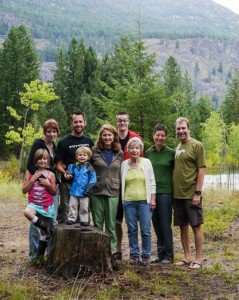 We had our Sunday Introduction to Meditation Class at Yoga Bliss. We practiced Dr. Rick Hanson‘s guided meditation called Feeling Connected. The meditation is drawn from his excellent audio program called Stress-Proof Your Brain: Meditations to Rewire Neural Pathways for Stress Relief and Unconditional Happiness.
We had our Sunday Introduction to Meditation Class at Yoga Bliss. We practiced Dr. Rick Hanson‘s guided meditation called Feeling Connected. The meditation is drawn from his excellent audio program called Stress-Proof Your Brain: Meditations to Rewire Neural Pathways for Stress Relief and Unconditional Happiness.
Rick observes that most of us live our lives at a slow simmer of tension. He offers a variety of “mind-body” tools to cool the fires of stress. He suggests that the most powerful way to use the mind body connections to improve mental and physical health is through guiding the autonomic nervous system – specifically the parasympathetic nervous or “rest & digest” system. Every time we calm your nervous system we tilt body/brain/mind increasingly toward inner peace and well being.
Most of us have heard about the positive affects of relaxation and meditation. Meditation actually increases the gray matter regions of our brains that handle attention, compassion and empathy. A regular practice has been shown to improve immune system functioning and enhance our psychological resilience.
Rick suggests that deliberately feeling safer helps control our instinctive hardwired tendency to look for and over react to threats. Our limbic system is designed to keep us vigilant. Past experiences of fear, loss, injury and trauma are all recorded as implicit memories that keep us primed to approach or avoid, often in a background state of anxiety. There are ways we can reprogram our brains to feel safer and let down our guard. Relaxation, imagery, connecting with others, engaging our reasoning to explore the basis of our fears are all ways we can cultivate an enduring sense of well being.
He describes how our earliest experience of attachment sets the stage for all future relationships. Psychologists have studied four categories of early attachment: secure, insecure-avoident, insecure-anxious and disorganized. Insecure attachment modes appear to be associated with characteristic patterns of neural activity – modes of thinking – such as lack of integration between the prefrontal cortex and the limbic system. I interpret this to mean that there is a disconnection between the reasoning and feeling part of our brains. We could be feeling fearful over anticipated threats that don’t exist or are exaggerated. Luckily we can recruit the reasoning and feeling parts of our brain to re-establish a sense of being secure in the world.
Our practice of Rick’s guided meditation, Feeling Connected, included relaxation, imagery, feeling and thinking as we brought to mind someone who really cares for us and then explored how it feels to be cared about, loved and respected. We allowed these feelings to intensify by locating how we sensed them in our body-minds then staying focused on the experience: really taking in the positive feeling of being worthy, being special to someone, being loved and respected. Rick describes this as warming up the neuro-circuits of caring.
We then shifted our focus from feeling cared about to the feeling of caring for others. We explored what compassion for others feels like in our bodies, hearts and minds. We reflected on all the little ways that we’ve supported or cared for others – contributing to their well being. We dwelled on the heartfelt wish that others be happy and then allowed ourselves to feel the goodness of being appreciated for the kindness we’ve extended. Being appreciated feels really good!
I could sense these feelings and attitudes of kindness naturally draw me into feeling more connected with others. I had little flash backs of our family vacation – nine of us crowded into a cabin – several with sniffles – in the rain! There were so many little moments of consideration, kindness, patience and tolerance. What a joy it was to see great-grandma, grand-parents, children and grand-children pacing each other along the trail, skipping stones and tenderly touching a salamander on the path. Of course, humor, good card hands and tasty food went a long way to sustain our harmonious relations. The unifying thread was our desire to come together – to really be together – notwithstanding the discomforts of long distance travel, weather and unforeseen illness.
Rick offers this “feeling connected” practice as a way of building our storehouse of inner resources – healing warmth we can draw on whenever we need it. We all know that life is change, many plans are thwarted – yet we still have the creative power of our minds. We can explore our fears in the vastness of mindful awareness. If we can manage to sustain this awareness we can see that fears change – they arise, subside and often disappear. We can think of the experiences of feeling connected and our capacity for mindful awareness as refuges.
In his book, The Buddha’s Brain, Rick encourages readers to consider where they find refuge – sources of support and safety. In traditional Buddhist practice one takes refuge in a teacher (the Buddha), the teachings (the Dharma) and the community of students on the path (the Sangha). I’ve found refuge in my several families – an extended web of kin, meditation and yoga teachers sharing sound guidance and real companionship. The web is like a net that offers just enough wiggle room to feel related, responsible and yet still free.
You can find this week’s homework and other resources at:
Sunday Meditation Class 15 Homework
